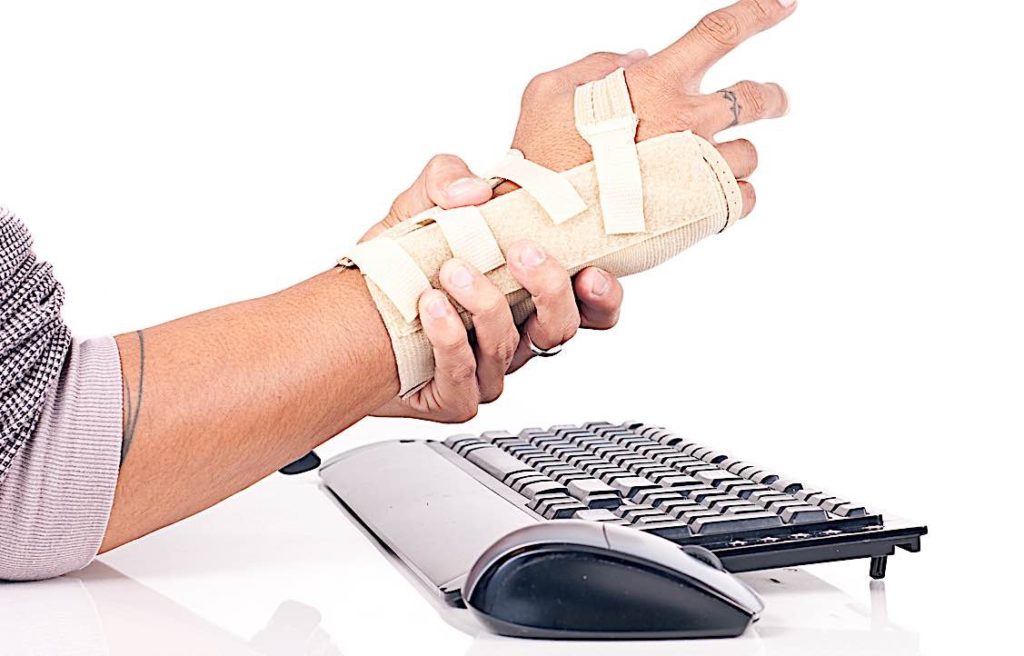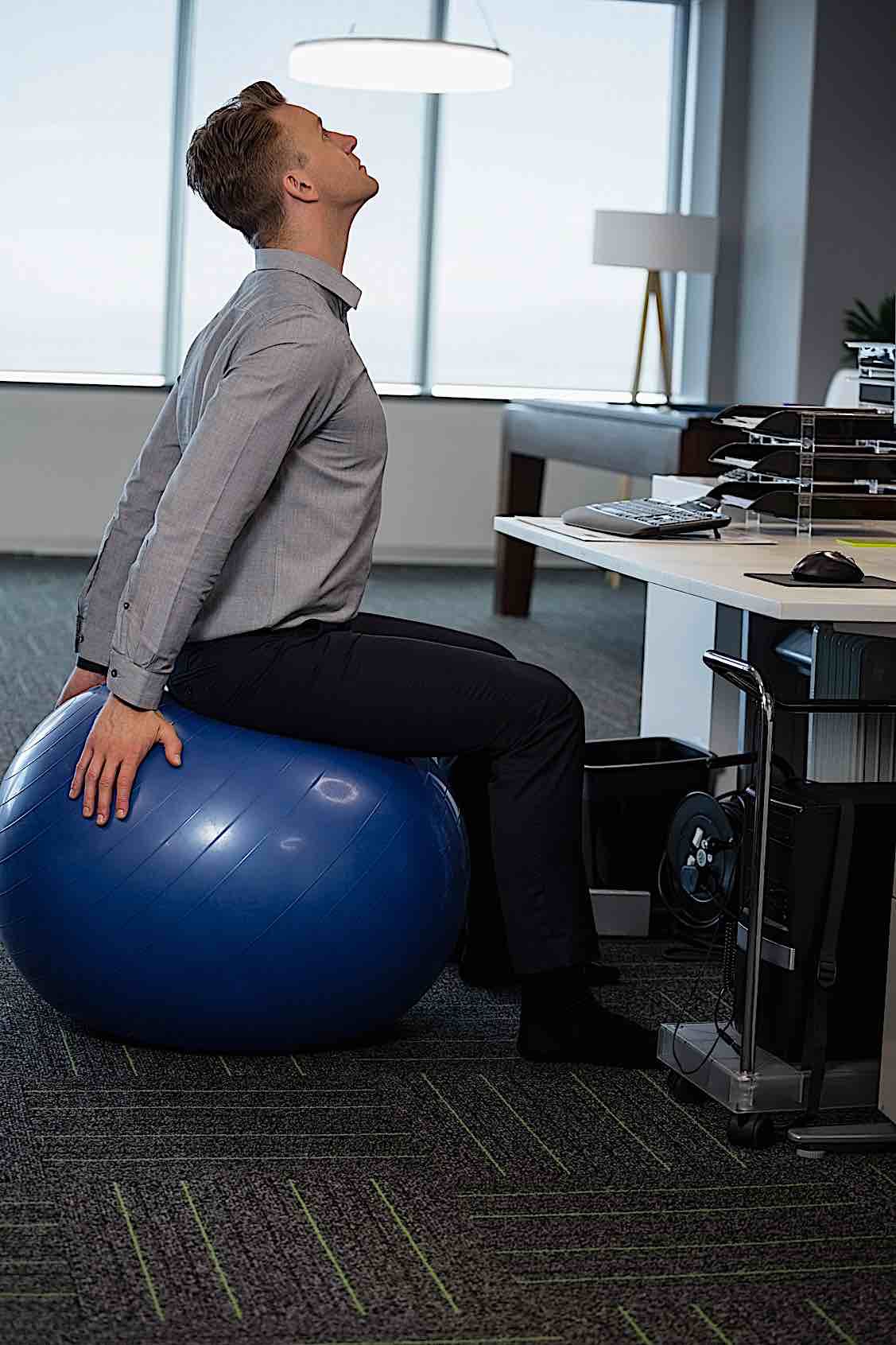
Medical cost benefits expected to rise 6 percent in Canada in 2020; Musculoskeletal conditions main cost. How to prevent issues in your workplace.
With health medical benefit costs set to rise another six percent in 2020 — according to a report from Aon [1] — HR Management teams are focusing on preventative care where possible. Globally, costs for employer sponsored medical plans is expected to increase 8 percent in 2020, up from 7.8 percent in 2019.
The biggest causes of the increased claims, according to another report [2] are (not cumulative, some multiple conditions):
- Musculoskeletal: 53%
- Cancer 47%
- Diabetes 44%
- Cardiovascular and heart disease 32%.

Prevention of Musculoskeletal Disorders becoming critical
To keep medical benefits programs affordable, a good work environment, with pro-active HR Management and Benefits Program Management, can be key. Larger companies might also involve Workplace Safety Officers.
- Do you need help establishing a preventative program in your workplace for MSI or MSD? Do you need help with HR Management issues? Contact the experts at Pivotal Solutions>>
The leading cost factor — musculoskeletal conditions — can be prevented or helped with ergonomic workplace design, chair replacements, exercise breaks, and even, more creatively, walking or standing desks.
Musculoskeletal disorders (MSDs) and Injuries (MSIs) accounted for 28.8% of lost time to injuries according to the Bureau of Labour Statistics (BLS). [3]
These statistics don’t take into account loss of productivity from discomfort. Musculoskeletal Disorders contribute to:
- fatigue
- discomfort
- pain
- loss of function
- disabilities.

Risk factors for MSDs and MSIs
Office policies and equipment contribute to the risk factors for MSDs. The most often discussed is ergonomics — especially keyboard, monitor and chair positions. For more energetic work environments, factors also including “lifting.”
One of the largest factors are repetitive actions, which can lead to debilitating issues such as Carpal Tunnel Syndrome — a medical condition due to compression of the median nerve as it travels through the wrist at the carpal tunnel. Ergonomic keyboards, ergo keyboard trays and proper seated positions can help. Another growing issue is eye-strain and headaches that reduce productivity.
For some high-stress positions, where too-much seated time is a contributing risk factor, providing options such as walking desks, exercise and/or stretching breaks and coaching / education can be the key to minimizing loss-of-productivity. Early intervention is always important. After the onset of MSDs in a team-member, recovery becomes lengthy and expensive.
Pro-active HR Management

One solution that has proven effective is “reminder” notifications — the communication method varies by company culture — along the lines of
- It’s 11:30, did you take a stretch-break?
- It’s 1:40, why not take a quick walk?
Another approach that works well in some offices is actual team stretch sessions. One office manager moved the desks in their office to allow for a “walking track” around the desks so that people on the phone — or even people having one-on-one meetings — could walk without obstructions while they talk. (The key being to provide a wide, clutter free area with no obstacles.) Well equipped offices might replace one of their lunch/break rooms with an exercise room.
Workplace Guidelines are vital. [See below, and consider downloading the government publication, “Workplace Guidelines for Prevention of Musculoskeletal Injuries. [4] [Download the helpful PDF>>]
Education — it’s key
Coach and publish information regularly, and establish HR rules for MSI/MSD prevention. As part of education, inform team members of the things to watch for such as:
- redness swelling loss of range of movement- difficulty moving a particular body part loss of strength pain (including eye strain!)
- tenderness
- numbness
- tingling
- burning “feeling”
- cold sensation
Coach team-members to seek medical or expert advice if they are experiencing recurring symptoms.
Causes
The clear, known causes are:
- physical force injuries
- work posture (chair, desk, keyboard, monitor)
- repetition
- contact stress
- duration and magnitude
Secondary causes include
- Environmental, such as temperature, sound, vibration, illumination.
- Organization of work, including shifts, task variability, rate of work and load.
- Layout of work environment, such as working reach, heights, seating, floor surfaces.
- Objects handled: size and shape, load and weight, handles and design.
Stages of Injury
1. Early stage manifests as fatigue, sore shoulders, neck pain — especially after work, for example, on the drive home.
Ask them to watch for stiff hands or limbs, night-time aches and pains.
2. Intermediate stage tends to show up as weakness. At this point visible signs may be present.
3. Late stage is evident when the pains and weaknesses will not go away, even with rest. When non-demanding tasks become difficult, the team member may be late stage.
Don’t wait for late stage to act. The health consequences can be very serious, and sometimes irreversible.
Conditions
The typical office-oriented flare ups tend to be:
- Tendonitis and tenosynovitis, or swelling of the tendon, the band of tissue connecting muscle to bone
- Carpal Tunnel Syndrome, which is very painful and sometimes even requires surgery.
- Muscle strain to neck, back or shoulders (or even legs) which can be debilitating.
Policies
Encourage a policy of:
- Informing supervisors if team members experience any symptoms
- Go to first aid station if painful
- Seek medical aid when needed.
Workers Compensation Board MSI Requirements
Good HR Management, office management and safety management are all keys to avoiding issues that result in lost productivity, discomfort and pain for employees, and costly health care. It is important to remember that several regulatory agencies must be considered in your HR and safety plans, including the Worker’s Compensation Board. For convenience, we reproduce Appendix 2 of the Workplace Guidelines Prevention MSI here:
The purpose of section 4.46 to 4.53 is to eliminate or, if that is not practicable, minimize the risk of musculoskeletal injury to workers.
4.46 In section 4.47 to 4.53 (the Ergonomics (MSI) Requirements)
means an injury or disorder of the muscles, tendons, ligaments, joints, nerves, blood vessels or related soft tissue including a sprain, strain and inflammation, that may be caused or aggravated by work.
4.47 The employer must identify factors in the workplace that may expose workers to a risk of musculoskeletal injury (MSI).
4.48 When factors that may expose workers to a risk of MSI have been identified, the employer must ensure that the risk to workers is assessed.
Risk Factors
4.49 The following factors must be considered, where applicable, in the identification and assessment of the risk of MSI:
(a) the physical demands of work activities,
including
(i) force required,
(ii) repetition,
(iii) duration,
(iv) work postures, and
(v) local contact stresses;
(b) aspects of the layout and condition of the workplace or workstation, including (i) working reaches,
(ii) working heights,
(iii) seating, and
(iv) floor surfaces;
(c) the characteristics of objects handled,
including
(i) size and shape,
(ii) load condition and weight
distribution, and
(iii) container, tool and equipment
handles;
(d) the environmental conditions,
including cold temperature;
(e) the following characteristics of the
organization of work:
(i) work-recovery cycles; (ii) task variability;
(iii) work rate.
Note: In work situations where a risk of MSI exists, typically only some factors from the list will be applicable. The WCB provides the chart Applicability of Risk Factors to assist.
Workplace Guidelines for the Prevention of Musculoskeletal Injuries 55
56 Workplace Guidelines for the Prevention of Musculoskeletal Injuries
Risk Control
4.50 (1)
The employer must eliminate or, if that is not practicable, minimize the risk of MSI to workers.
Education and Training
4.51 (1)
The employer must ensure that a worker who may be exposed to a risk of MSI is educated in risk identification related to the work, including
the recognition of early signs and symptoms of MSIs and their potential health effects.
(2) Personal protective equipment may only be used as a substitute for engineering or administrative controls if it is used in circumstances in which those controls are not practicable.
(3) The employer must, without delay, implement interim control measures when the introduction of permanent control measures will be delayed.
(2) The employer must ensure that a worker to be assigned to work which requires specific measures to control the risk of MSI is trained in the use of those measures, including, where applicable, work procedures, mechanical aids and personal protective equipment.
Note: The WCB provides the pamphlet The Basics of MSI Risk Identification to assist with the application of section 4.51(1). Materials addressing other matters such as risk assessment and control are also available.
Evaluation
4.52 (1)
The employer must monitor the effectiveness of the measures taken
to comply with the Ergonomics (MSI) Requirements and ensure they are reviewed at least annually.
Consultation
4.53 (1)
The employer must consult with the joint committee, or the worker health and safety representative, as applicable, with respect to the following when they are required by the Ergonomics (MSI) Requirements:
(a) risk identification, assessment and control;
(b) the content and provision of worker education and training;
(c) the evaluation of the compliance measures taken.
Workplace Guidelines for the Prevention of Musculoskeletal Injuries 57
(2) When the monitoring required by subsection (1) identifies deficiencies, they must be corrected without undue delay.
(2) The employer must, when performing a risk assessment, consult with
(a) workers with signs or symptoms of
MSI, and
(b) a representative sample of the
workers who are required to carry out the work being assessed.
Do you need help establishing a preventative program in your workplace for MSI or MSD? Do you need help with HR Management issues?
Contact Pivotal
NOTES
[1] Aon forecast 2020
[2] International Foundation of Employee Benefit Plans’ Workplace Wellness Trends 2019 Survey Report.
[3] Bureau of Labour Statistics (BLS)
[4] Workplace Guidelines Prevention (PDF download)


 Our HR solutions experts can recommend the right mix of HR outsourced services to make your entry into Canada easier.
Our HR solutions experts can recommend the right mix of HR outsourced services to make your entry into Canada easier.  Pivotal Employment Management Services co-hires your workforce, simplifying entry of your business in Canada.
Pivotal Employment Management Services co-hires your workforce, simplifying entry of your business in Canada. 















